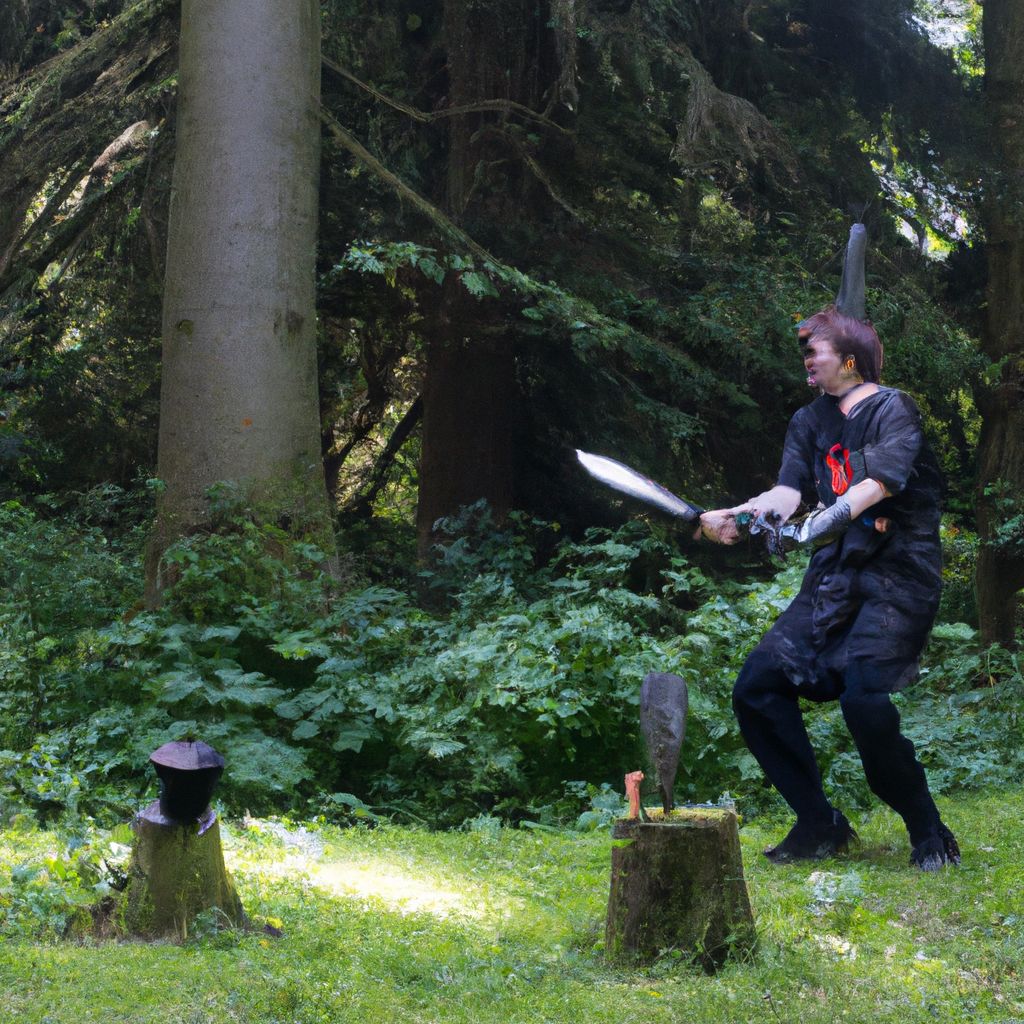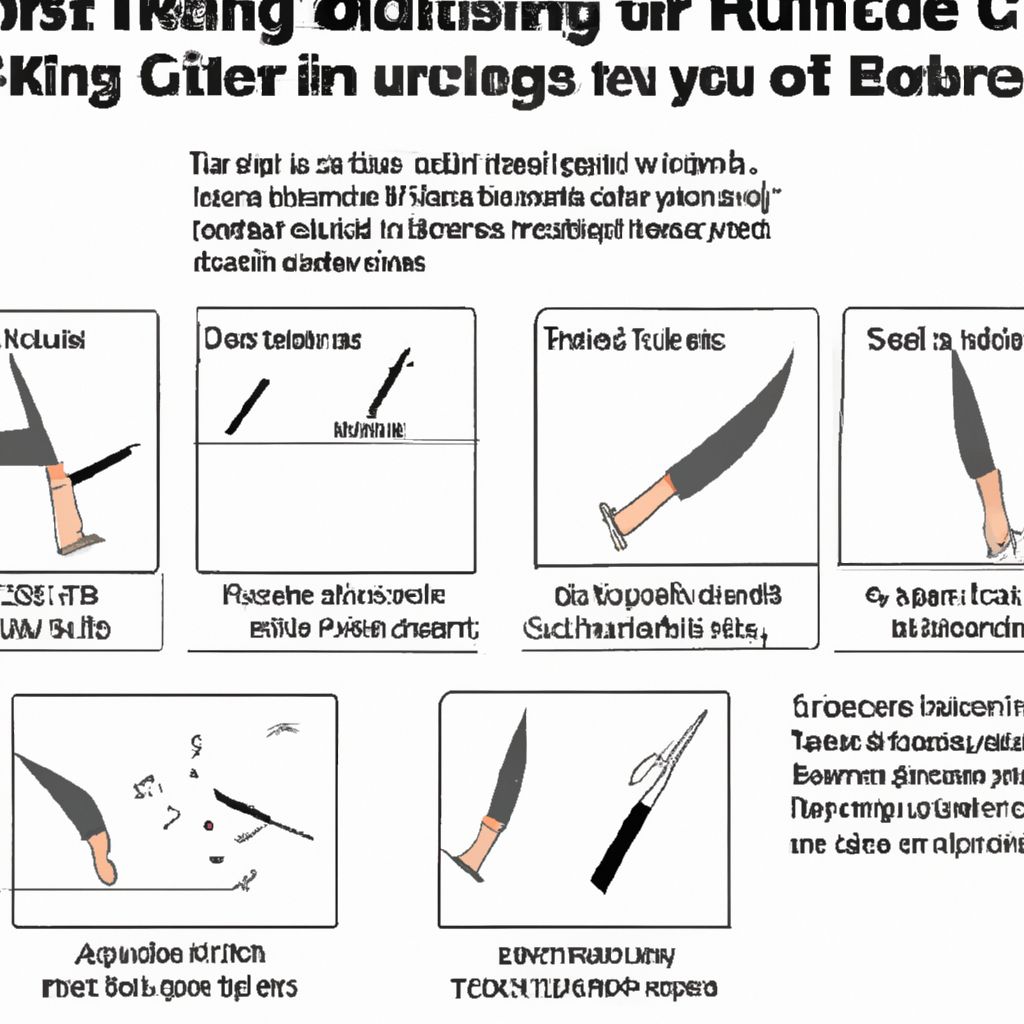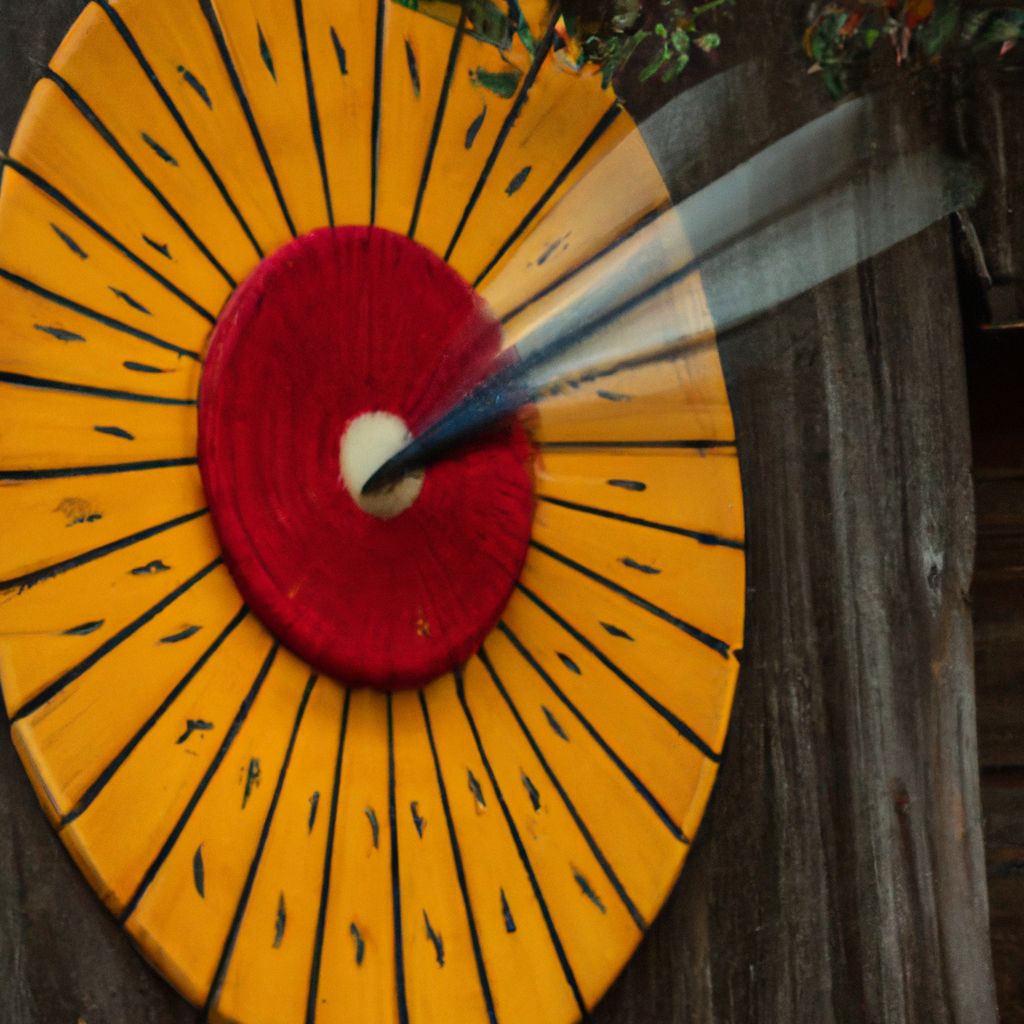- Introduction to Knife Throwing
- Choosing the Right Knife
- Basic Knife Throwing Techniques
- Advanced Knife Throwing Techniques
- Competitions and Knife Throwing Community
- From Beginner to Expert: A Journey
- Closing Thoughts
Introduction to Knife Throwing

Knife throwing, as an art, sport, and recreational activity, has a rich and fascinating history. Originating thousands of years ago, it has been practiced by various cultures around the globe, from the Native Americans to the Samurais of Japan.
The exact origins of knife throwing, however, are not clearly documented. Some believe it dates back to prehistoric times when early humans would throw rocks and sticks for hunting. Over time, these evolved into more sophisticated tools like spears and knives. Knife throwing then became an essential survival skill.
In recent years, there has been a resurgence in the popularity of this ancient practice. According to the International Knife Throwers Hall of Fame (IKTHOF), there are now thousands of professional knife throwers worldwide. The organization holds regular competitions and provides a platform for throwers to demonstrate their skills and techniques.
Today, knife throwing is not only practiced for hunting or combat but is also a competitive sport and hobby. The increasing number of knife throwing clubs and associations, both nationally and internationally, is a testament to its growing popularity.
Note: While knife throwing can be a fun and engaging activity, it's important to always follow safety protocols to avoid injury.
Choosing the Right Knife

Choosing the right knife is a critical first step in mastering the art of knife throwing. The type of knife used can significantly impact the technique and accuracy of the throw.
- Balance:
- Throwing knives are either blade-heavy, handle-heavy, or evenly balanced. For beginners, an evenly balanced knife is usually the best choice. It allows for a consistent throw, regardless of whether it's thrown from the blade or handle.
- Size:
- The size of the knife is also crucial. A knife that's too light may not maintain its trajectory, while one that's too heavy can be difficult to throw accurately. A good starting point is a knife that's about 12-16 inches in length and weighs around 200-400 grams.
- Material:
- The knife should be made from a single piece of steel. This ensures durability, and there are no parts that can come loose during a throw.
- Design:
- A simple, no-frills design is best for beginners. Fancy features like decorative handles or serrated edges may look appealing but can hinder the throwing process.
Safety is paramount when handling throwing knives. Here are some basic precautions:
- Always handle the knife by the non-sharp edge, especially while learning to throw.
- Ensure the area around you is clear of people and pets before you throw.
- Never throw a knife at a living target.
- Store your knives in a secure place, out of reach from children.
Remember, practice and patience are key to mastering knife throwing. Start with a basic, well-balanced knife and gradually experiment with different styles and techniques as your skills improve.
Basic Knife Throwing Techniques

Learning to throw a knife accurately requires practice and patience. Here are some basic techniques to get you started:
- No-Spin Throw:
-
- Stand about 10 feet from your target. Face it directly, standing upright with your feet shoulder-width apart.
- Hold the knife by the handle, with your thumb on one side and the rest of your fingers on the other. The blade should be pointing up.
- Bring the knife back over your shoulder, then throw it forward in a smooth, straight motion, releasing it when your hand is about level with your head.
- The key to a successful no-spin throw is to let the knife slide out of your hand, rather than actively throwing it.
- Half-Spin Throw:
-
- Start in the same position as the no-spin throw, but this time, hold the knife by the blade, not the handle.
- Bring the knife back over your shoulder, then throw it forward at the target, releasing it when your hand is about level with your head.
- The half-spin throw is more about the wrist's flick than the arm's force, which creates the spin.
Here are some tips for beginners:
- Always practice in a safe, controlled environment.
- Start with lighter knives and gradually move to heavier ones as your technique improves.
- Stay patient. It's normal to miss the target many times when you're first starting.
Common mistakes to avoid:
- Incorrect Grip: A too tight or too loose grip can affect the knife's trajectory. Find a grip that's comfortable and gives you good control over the knife.
- Overthrowing: Throwing the knife with too much force won't necessarily make it stick to the target. Focus on your technique and the knife's release, not the power of your throw.
- Not Observing: Take note of where your knife lands. This can give you valuable feedback on your technique and what you need to adjust.
Advanced Knife Throwing Techniques

Once you have mastered the basics of knife throwing, you can move on to more advanced techniques. These techniques focus on improving accuracy, speed, and power.
- Multiple Knife Throwing:
-
- Start with two knives, one in each hand. Stand facing the target, feet shoulder-width apart.
- Bring both knives back over your shoulders, then throw them simultaneously at the target. The aim is to get both knives to stick in the target at the same time.
- As your skills improve, you can increase the number of knives you throw at once.
- Quick Draw:
-
- Start with the knife in a sheath at your side. Stand facing the target, feet shoulder-width apart.
- Quickly draw the knife from the sheath and throw it at the target in one smooth motion.
- This technique requires a lot of practice to perfect, but it can significantly improve your speed and accuracy.
Here are some tips for practicing these advanced techniques:
- Focus on one technique at a time. Trying to learn multiple techniques at once can be overwhelming.
- Start each practice session with a warm-up to prevent injuries.
- Consistency is key. Try to practice regularly, even if it's just for a few minutes each day.
- Get feedback. Having someone watch you can help identify any issues with your technique.
Remember, the goal of these advanced techniques is not just to show off, but to improve your overall knife throwing skills. It's important to always prioritize safety and control over speed and power.
Competitions and Knife Throwing Community

Knife throwing competitions provide an excellent platform for enthusiasts to demonstrate their skills, learn from others, and connect with the larger knife throwing community.
There are various national and international knife throwing organizations, such as the International Knife Throwers Hall of Fame (IKTHOF) and the American Knife Throwers Alliance (AKTA). These organizations regularly hold competitions for both amateur and professional throwers.
Typically, competition participation involves the following steps:
- Research the rules and regulations of the competition. These can vary from one organization to another.
- Register for the competition. Some competitions might require membership with the organizing body.
- Prepare for the competition. This might involve practicing specific throws or techniques.
- Attend the competition. This usually involves travel and accommodation arrangements.
Competitions usually involve a series of rounds, each requiring different throws at varying distances. The exact format can vary, but the goal is always to score the highest number of points by hitting the target as accurately as possible.
Connecting with the knife throwing community can be a great way to learn and grow as a thrower. Here are some ways to get involved:
- Join a Local Club: Many cities have knife throwing clubs where enthusiasts meet regularly to practice and share tips.
- Online Forums: Websites like
ThrowziniandKnifeDogshave active forums where throwers discuss techniques, equipment, and competitions. - Social Media: Platforms like Facebook and Instagram have many groups and pages dedicated to knife throwing.
Whether you're a beginner or an experienced thrower, being part of the knife throwing community can provide motivation, inspiration, and a wealth of knowledge.
From Beginner to Expert: A Journey

The journey from a novice to an expert in knife throwing can be both challenging and rewarding. It requires patience, perseverance, and a consistent practice regimen.
Many expert throwers recount their early days of practice filled with missed targets and frustration. Joe "Brokenfeather" Darrah, a renowned knife thrower and multiple-time world champion, shares his initial struggles with mastering the throw. "The first few weeks were tough. I had more misses than hits, but I didn't give up. I practiced daily, and slowly but surely, I started to see improvement."
One common challenge faced by beginners is the lack of consistency. This can be due to several factors such as incorrect grip, improper stance, or inconsistent throwing motion. The key to overcoming these issues is to keep practicing and tweaking your technique until you find what works best for you. A good idea is to maintain a practice log where you can note down your observations and improvements.
Another common hurdle is a plateau in skill improvement. After a certain point, you may feel like you're no longer improving, despite regular practice. In such situations, seeking guidance from more experienced throwers can be beneficial. They can provide valuable insights and tips to help you break through the plateau.
One of the most significant aspects of transitioning from a beginner to an expert is the shift from focusing solely on hitting the target to understanding the nuances of the throw. As Adam Celadin, a five-time world champion knife thrower, puts it, "It's not just about throwing the knife. It's about understanding the knife, the rotation, the physics behind it."
Despite the challenges, the journey from a beginner to an expert is filled with learning and growth. It's about enjoying the process, celebrating small victories, and continuously striving to improve.
Closing Thoughts

Knife throwing is much more than a sport or hobby; it's an art form that combines focus, precision, and physical prowess. It can be a great way to unwind, a fun way to challenge yourself, or even a path to competitive sport.
Engaging in knife throwing can have several benefits:
- Physical Fitness: It can be a great way to enhance hand-eye coordination, strength, and flexibility.
- Mental Focus: Knife throwing requires a high level of concentration, which can help improve your focus and attention span.
- Community: Being part of the knife throwing community can provide a sense of belonging and camaraderie.
However, it's essential to remember that knife throwing is a potentially dangerous activity if not practiced responsibly. Always adhere to safety guidelines, respect your tools, and consider the well-being of others. Whether you're a beginner or an experienced thrower, never stop learning and refining your technique.
So, if you're intrigued by the art of knife throwing, don't shy away from giving it a try. With patience, practice, and a responsible attitude, you can embark on a rewarding journey into this fascinating world.








